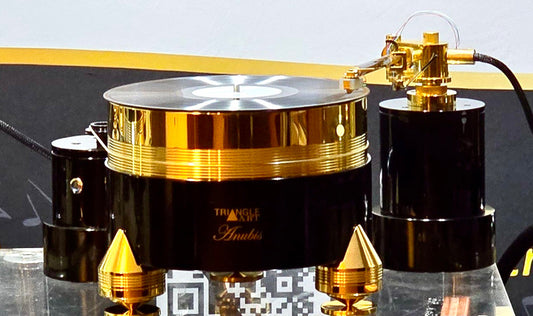For the past week, I’ve been thinking a bit more about the issue of system synergy – and its opposite. I have a sort of “wild” idea about what may lay behind the sonics of what’s going on (and the equipment).
A reader named (presumably) Bob Worley used the expression “rounded at the edges” to describe what I was struggling to talk about, which is the sound of DSD audio played back through my system. I think that’s entirely apt. The effect is subtle, but there (or not there, as the case may be).
When Paul McGowan first heard the breadboarded version of the DirectStream DAC, courtesy of Gus Skinas and Gus’ visitor Ted Smith, he had a revelation and based on what he heard, resolved to manufacture it. Great. (Paul hasn’t been to my place in more than 20 years so I wouldn’t expect him to remember much about the sound system.)
To reiterate what I noted in my first installment (Issue 98): all the electronics in my system are now PS Audio’s top-of-the-line stuff. And it’s coherent; beautifully so. It reminds me of a time years ago when Allen Perkins (of Spiral Groove) and I were strolling in Pasadena with our wives. Someone nearby but out of sight was playing a violin. I called his attention to it, and remarked, “We’ll never get it.” But in fact “it” is now closer to attainable now than it was then. Reality is rounded at the edges, for the most part.
Great, right? Not so fast.
What was it about my old set-up that maybe I liked more? Well, this is just a theory, you understand, and to say I liked it more might be overstating things. In my current system I hear deeper into the stage, which is a good indication that things are heading in the right direction. But…
In the 90s mastering engineer Joe Gastwirt invited me over to his old studio, Oceanview Digital Mastering, to hear some Sony engineers demonstrating for him their latest thing: SBM, Super Bit Mapping. With SBM, one could clearly hear deeper into the music than with previous encoding systems. But I remarked that I thought it was the truncated depth that audiophiles would prefer, and that the things which audiophiles preferred, such as ambience and transients, were louder, more obvious, in the 16-bit versions.
The evolution of my system is kind of like that. My theoretical guess, which I now feel an obligation to try to run down, is that the system, as I had gotten to know and love it so much over more than 20 years, was, by virtue of everything coming from a different manufacturer, and by using Mark Porzilli’s stunning (but PCM-only) Laufer-Teknik Memory Player 64 CD player, was very subtly “enhancing” (i.e. not getting exactly right) the transient information. And that incredibly slight distortion – distortion, as in something added to the signal – was something I liked. I mean, Porzilli’s player, Tim deParavacini’s EAR G-88 preamp, Richard Brown’s BEL 1001 Mk IV/V amplifiers: they’re nothing to sneeze at. But maybe, as great as they sounded, they were slightly mismatched.
Anyway – it’s a theory.
With any luck, I’ll get the newer Porzilli player soon, which will do DSD, and I can drive myself a little more nuts.



